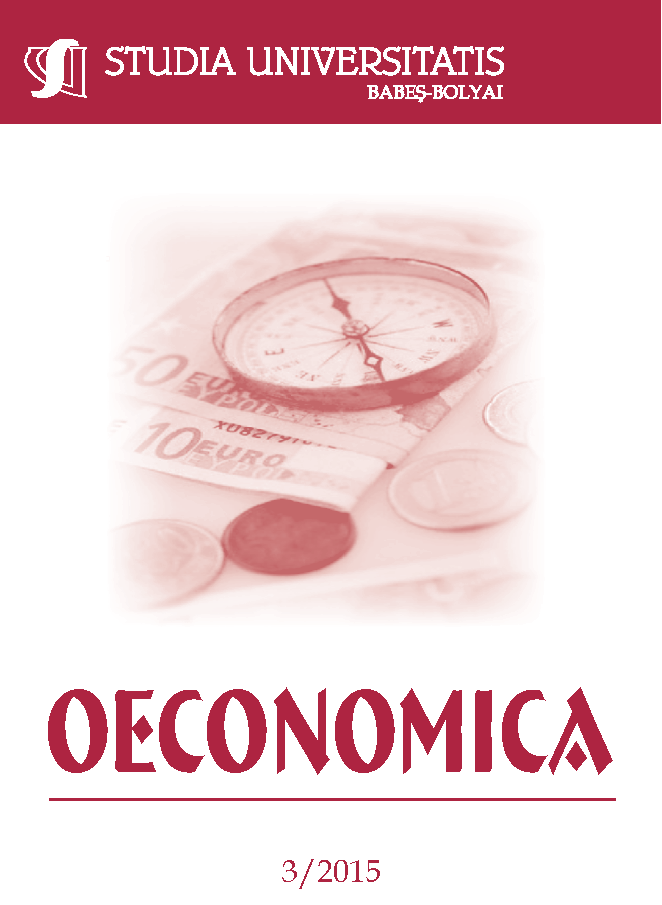ROMANIAN ECONOMY PROFILE BASED ON A STOCHASTIC ANALYSIS
Keywords:
stochastic analysis, Bayesian approach, steady-state of variables, technology and money stock impulse, general equilibriumAbstract
The paper captures, based on a simplified, small-size dynamic stochastic general equilibrium model and on Bayesian instruments, the evolution of the Romanian economy since the beginning of this century. The depicted economy is governed by basic representative agents: household, firm, financial organism, embodied by banks, and monetary authority, playing a subsidiary role. Two shocks are considered, the technology real shock and the money stock nominal shock, both of them impacting the economy and changing the trajectory of the relevant economic variables. The steady-state return time of the model variables and the estimates of the parameters allow us to set the pattern of future economic trends and to make pertinent decisions so as to attain sustainable macro-stabilization.
JEL classification: C61, D12, D22
References
Adolfson M., Laséen S., Lindé J., Villani M. (2005) Bayesian estimation of an open economy DSGE model with incomplete pass-through. Sveriges Riksbank, Working Paper Series no. 179
Almeida V. (2009) Bayesian estimation of a DSGE model for the Portuguese economy, Banco de Portugal, Economics and Research Department, Working Paper Series no. 200914
Andrés J., Burriel P., Estrada A. (2006) BEMOD: A DSGE model for the Spanish economy and the rest of the Euro Area, Bank of Spain, Working Paper Series no. 0631
Calvo G. A. (1983) Staggered prices in a utility-maximizing framework, Journal of Monetary Economics, 12 (3), 383 – 398
Christiano L., Trabandt M., Karl W. (2010) DSGE Models for Monetary Policy Analysis, NBER Working Paper Series no. 16074
Christoffel K., Coenen G., Warne A. (2007) Conditional versus Unconditional Forecasting with the New Area-Wide Model of the Euro Area, Central Bank Workshop on Macroeconomic Modelling, Norges Bank
Erceg C. J., Henderson D. W., Levin A. T. (2000) Optimal monetary policy with staggered wage and price contracts, Journal of Monetary Economics, 46 (2), 281–313
Griffoli T.M. (2007) An introduction to the solution and estimation of DSGE models, available at http://www.dynare.org/documentation-and-support.
Hudea (Caraman) O.S. (2012) Dynamic and Stochastic Estimation of the Romanian Economy, based on the New Keynesian Model, SCCECE Journal, 1-2, 107-123
Hudea (Caraman) O.S. (2014) Impulse-Response Function Analysis and Forecasts with a Dynamic Stochastic General Equilibrium Model, ECECSR Journal, 48(3), 99-121
Hudea (Caraman) O.S. (2015) Estimation and Variance Decomposition in a Small-size DSGE Model, Romanian Statistical Review Supplement, 1, 121-127
Kydland F. E., Prescott E. C. (1982) Time to Build and Aggregate Fluctuations, Econometrica, 50 (6), 1345–1370
Lees K., Matheson T., Smith C. (2011) Open economy forecasting with a DSGE-VAR: Head to head with the RBNZ published forecasts, Elsevier: International Journal of Forecasting, 27(2), 512-528
Merola R. (2015) The role of financial frictions during the crisis: An estimated DSGE model, Economic Modelling, 48(1), 70-82
Rotemberg J., Woodford M. (1997), An Optimization-Based Econometric Framework for the Evaluation of Monetary Policy, NBER Chapters. In: NBER Macroeconomics Annual, 12, pp. 297-361
Schorfheide F. (2000) Loss function-based evaluation of DSGE models, Journal of Applied Econometrics, 15(6), 645-670
Smets F., Wouters R. (2003) An Estimated Dynamic Stochastic General Equilibrium Model of the Euro Area, Journal of the European Economics Association, 1(5), 1123-1175
Smets F., Warne A., Wouters R. (2014) Professional forecasters and real-time forecasting with a DSGE model, International Journal of Forecasting, 30(4), 981-995
Sargent T., Surico P. (2011) Two Illustrations of the Quantity Theory of Money: Breakdowns and Revivals, American Economic Review, 101(1), 109-128.
Downloads
Published
How to Cite
Issue
Section
License
Copyright (c) 2015 Studia Universitatis Babeș-Bolyai Oeconomica

This work is licensed under a Creative Commons Attribution-NonCommercial-NoDerivatives 4.0 International License.



